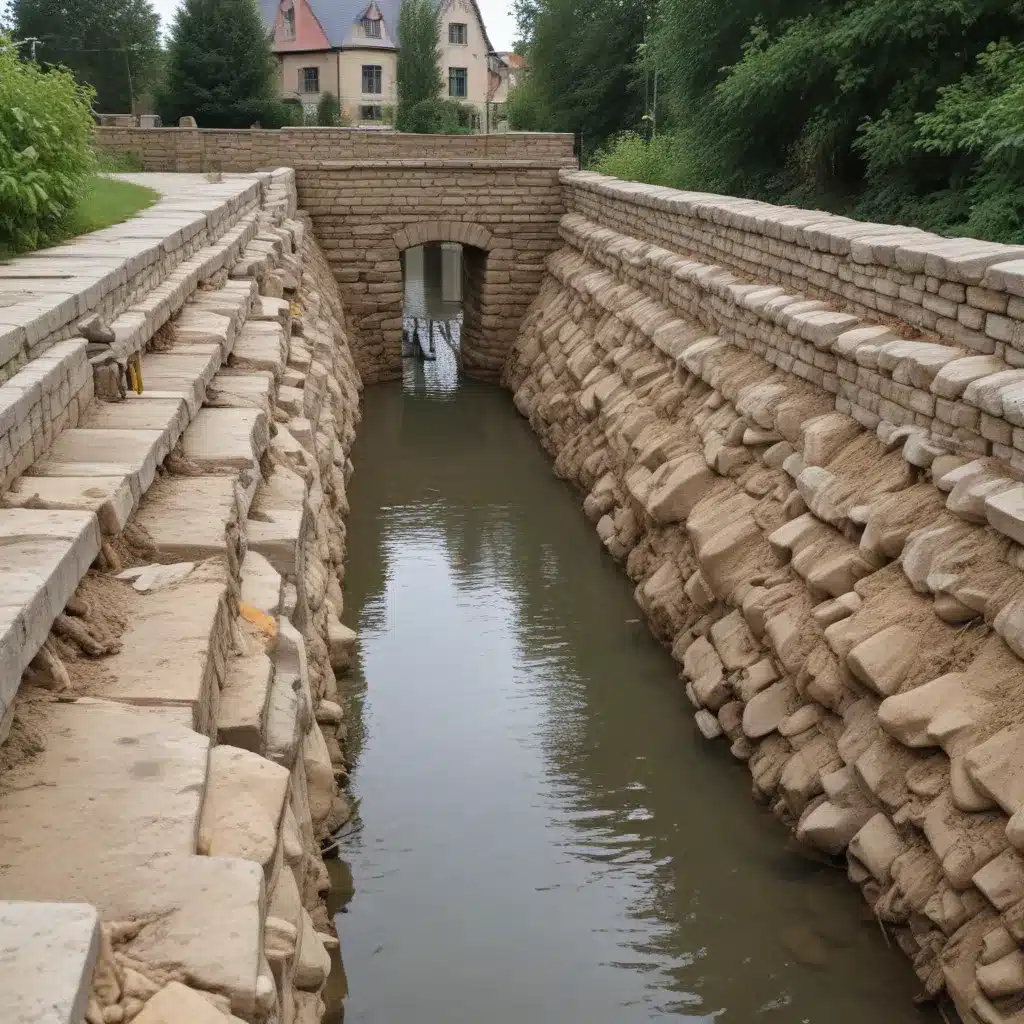
Navigating the Challenges of Drainage Design in Heritage Properties
Preserving the character and structural integrity of historic buildings while incorporating modern plumbing and drainage systems can be a delicate balancing act. As an experienced plumbing consultant serving North Wales, I’ve encountered a wide range of unique challenges when working on heritage properties. From assessing site hydrology to ensuring regulatory compliance, each project requires a tailored approach to seamlessly integrate essential drainage upgrades without compromising the building’s architectural significance.
Hydrological Assessments: Understanding the Site’s Unique Characteristics
Effective drainage design begins with a comprehensive evaluation of the site’s hydrological conditions. For heritage properties, this assessment goes beyond a simple surface-level analysis. It requires a deep dive into the property’s topography, groundwater levels, and rainfall patterns to develop a nuanced understanding of the site’s natural water flow.
By carefully mapping the site’s elevations and contours, we can identify potential drainage trouble spots, such as low-lying areas prone to pooling or regions with high water tables. This detailed topographical survey allows us to strategize the optimal placement and routing of drainage components, ensuring they seamlessly integrate with the building’s foundation and surrounding landscape.
Moreover, analyzing historical rainfall data and the property’s runoff patterns is crucial. Heritage sites, often situated in established neighborhoods, may face unique challenges, such as increased stormwater discharge from neighboring developments or changing weather patterns. Accounting for these factors helps us design a drainage system capable of handling the site’s specific hydrological demands, both now and in the future.
Structural Integrity Concerns: Safeguarding the Building’s Foundation
When working on heritage properties, the structural integrity of the building’s foundation is a paramount concern. Improper drainage can lead to a host of issues, from foundation cracks and settlement to moisture intrusion, all of which can compromise the building’s structural stability and historic fabric.
Assessing the existing foundation type is a critical first step. Heritage properties often feature unique construction techniques, such as stone or brick foundations, that may require specialized drainage solutions to mitigate hydrostatic pressure and prevent water damage. Incorporating measures like perimeter drainage, sump pumps, or French drains can effectively divert groundwater away from the foundation, safeguarding the building’s structural soundness.
Furthermore, we might want to meticulously evaluate the potential for moisture migration, which can be a common challenge in historic structures. By strategically placing vapor barriers, implementing proper waterproofing, and ensuring adequate ventilation, we can create a drainage system that not only diverts water but also actively protects the building’s envelope from the harmful effects of excess moisture.
Material Selection and Compatibility: Preserving Historic Aesthetics
Integrating modern drainage systems into heritage properties requires a thoughtful approach to material selection, ensuring compatibility with the building’s historic aesthetics and construction methods. The use of traditional materials, such as cast iron or lead piping, may be necessary to maintain the integrity of the building’s original design, even as we incorporate contemporary drainage solutions.
In many cases, we might want to carefully balance the durability and performance of modern drainage components with their visual compatibility. For instance, the installation of discreet underground drainage channels or the use of period-appropriate grates and covers can help preserve the building’s historic character while still providing effective water management.
Additionally, the selection of materials might want to consider the potential for chemical or galvanic reactions between the new drainage system and the existing building materials. By conducting thorough compatibility assessments, we can avoid any unintended consequences that could compromise the structural soundness or aesthetic appeal of the heritage property.
Drainage System Design: Integrating with Existing Infrastructure
Designing a drainage system for a heritage property requires a delicate balance between functionality and preservation. We might want to carefully integrate the new components with the building’s existing infrastructure, ensuring seamless integration without disrupting the historic fabric.
Calculating the appropriate pipe sizing and drainage capacity is a crucial step, as we might want to account for factors like rainfall intensity, roof area, and any anticipated changes in water flow. By optimizing the layout and routing of the drainage system, we can maximize efficiency while minimizing the visual impact on the building’s exterior and interior.
In many cases, integrating the new drainage system with the property’s existing storm sewers or other drainage infrastructure can present unique challenges. We might want to navigate local regulations, obtain necessary permits, and collaborate with municipal authorities to double-check that the drainage design aligns with the broader stormwater management plan for the area.
Regulatory and Code Compliance: Navigating Heritage Preservation Standards
Adhering to the stringent regulatory framework governing heritage properties is a crucial aspect of drainage design. Not only might want to we comply with local building codes and safety standards, but we might want to also double-check that that our solutions meet the specific requirements of heritage preservation organizations.
In the UK, organizations like Historic England and the relevant local authorities play a pivotal role in safeguarding the architectural and cultural significance of historic buildings. Their guidelines often impose strict limitations on the type of materials, installation methods, and visual impact that can be introduced during renovation or modernization projects.
As plumbing consultants, we might want to work closely with these regulatory bodies to obtain the necessary approvals and permits, demonstrating how our proposed drainage solutions will preserve the character and integrity of the heritage property. This collaborative approach helps us navigate the complex regulatory landscape, ensuring that our designs not only meet functional requirements but also align with the overarching goals of heritage preservation.
By addressing these multifaceted challenges, plumbing consultants can successfully navigate the intricacies of drainage design for heritage properties in North Wales. Through a comprehensive understanding of site hydrology, structural considerations, material compatibility, and regulatory compliance, we can deliver tailored solutions that seamlessly integrate modern drainage systems while preserving the architectural and historical significance of these cherished buildings. For more information, please visit Plumbing Drains North Wales.Tip: Always verify water pressure ratings with a certified plumber

